Understanding cause and effect is a fundamental cognitive skill that children start to learn from a very young age. This crucial concept helps preschoolers grasp how their actions impact the world around them, aiding in the development of logical thinking, problem-solving abilities, and basic scientific reasoning. The ability to understand and anticipate the consequences of their actions is integral to their cognitive and social development.
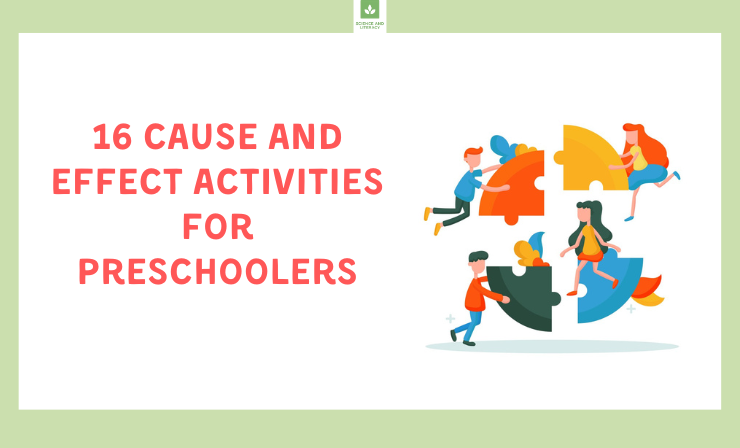
Engaging preschoolers with cause and effect activities not only reinforces this essential skill but also makes learning interactive and fun. These activities are designed to spark curiosity and encourage children to explore the mechanisms behind everyday events. By involving them in hands-on activities, children can see the immediate results of causes and their effects, which cements their understanding and retention of the concept.
Unleash learning superpowers with our Games & Activities! ✨ Structured fun teaches:
🧠 Cause & Effect
🔄 Sequential
⏰ Attention & Timing
🎯 Targeting & Timing
🔍 Introduce Choice
🤔 Decision MakingExplore our website for a free trial or subscription: https://t.co/CUIs6eX0yQ pic.twitter.com/GA8S96TudA
— HelpKidzLearn (@HelpKidzLearn) January 29, 2024
In this article, we explore 16 diverse activities specifically designed for preschoolers. These activities range from simple storytelling and crafts to more structured games and experiments. Each activity is crafted to suit young learners’ developmental stages, ensuring that they are both educational and enjoyable.
By integrating these activities into daily learning, educators and parents can provide children with valuable opportunities to see the practical implications of their actions and decisions in a controlled, safe environment. This not only enhances their understanding but also encourages curiosity and a desire to explore how things work.
On this page, you will find:
- 16 Cause and Effect Activities for Preschoolers →
- Why are Cause and Effect Activities Important for Preschoolers? →
- Tips for Teaching Cause and Effect→
Let’s dive into these creative and educational activities that will enrich your preschooler’s learning experience and lay a strong foundation for their future educational journey. Through structured play and exploration, we can help foster a generation of thoughtful, analytical, and responsible individuals.
| Experiment | Difficulty level | Cost | Description |
| 1. Reading a Story to Understand Cause and Effect | Easy | Low ($1 to $5) | Use storytelling to illustrate how actions within the plot lead to various outcomes, fostering comprehension of cause and effect. |
| 2. Connecting Events with Examples | Easy | Low ($1 to $5) | Demonstrate cause and effect through everyday examples, making abstract concepts tangible for preschoolers. |
| 3. Playing Cause and Effect with Nursery Rhymes | Easy | Low ($1 to $5) | Utilize nursery rhymes to identify and discuss the sequence of events and their consequences in a fun format. |
| 4. Cause and Effect Clue Words | Easy | Low ($1 to $5) | Introduce specific words that signal cause and effect, helping children improve their language and reading skills. |
| 5. Design Cards | Easy | Low ($1 to $5) | Have children create cards that depict a cause on one side and the effect on the other, reinforcing their understanding through creativity. |
| 6. Let Your Child Dive into Water | Easy | Low to Middle ($1 – $10) | Allow children to experiment with actions in water to see the physical effects, such as splashes and ripples. |
| 7. Plan Interesting Games | Easy to Medium | Low ($1 to $5) | Incorporate cause and effect principles into games, making learning both fun and educational. |
| 8. Creating an Anchor Chart< | Medium | Low ($1 to $5) | Collaboratively create a visual chart with children that lists examples of cause and effect to enhance understanding. |
| 9. Discussions about Cause-and-Effect Relationships | Medium | Low ($1 to $5) | Use discussions and simple experiments to explore and explain the connections between actions and their outcomes. |
| 10. Role-Play for Learning Cause and Effect | Medium | Low ($1 to $5) | Engage children in role-playing different scenarios to see the direct effects of their actions. |
| 11. Use a Graphic Organizer | Medium | Low ($1 to $5) | After a story or activity, have children map out causes and effects using a graphic organizer to clarify their understanding. |
| 12. Create Flipbooks | Medium | Low ($1 to $5) | Guide children in creating flipbooks that visually connect a cause on one page with its effect on another. |
| 13. Create a Cause-and-Effect Chain | Medium | Low ($1 to $5) | Build a chain of paper links where each link represents a cause or effect, illustrating the continuity in sequences. |
| 14. Make Comics | Medium | Low ($1 to $5) | Encourage children to draw comic strips that show cause and effect within simple, engaging stories. |
| 15. Use Photos to Explore Cause and Effect | Medium | Low ($1 to $5) | Show photos to children and discuss potential causes and effects depicted in the images to enhance critical thinking. |
| 16. Do a Scavenger Hunt | Medium | Low ($1 to $5) | Organize a scavenger hunt where each clue leads to the next, teaching children to connect actions and consequences logically. |
Now, let’s explore 16 diverse activities specifically designed for preschoolers, each crafted to enhance cognitive development and understanding of cause and effect through engaging and playful experiences.
1. Reading a Story to Understand Cause and Effect
Introduce preschoolers to cause and effect through storytelling. You can use a simple storybook or a basic science experiment like the “Dancing Raisins.” Discuss the story’s events or experiment’s outcomes, prompting children to think about why things happened. This method helps improve their analytical skills and enhances their understanding of sequences and consequences.
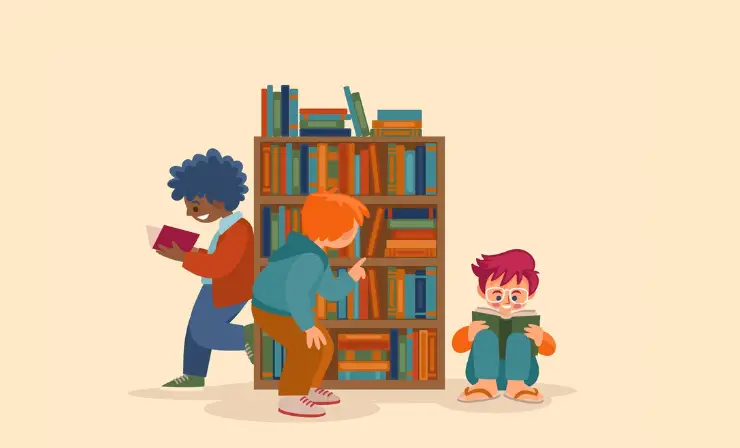
Difficulty Level: Easy
Cost: Low ($1 – $5) – Most costs are associated with purchasing a basic children’s book if not already available.
Materials
- Children’s storybook or simple materials for a basic experiment (e.g., raisins, soda water for the Dancing Raisin Experiment)
- Props or pictures to illustrate key points (optional)
I recommend watching the video “Learn How to Identify and Understand Cause and Effect Relationships” to enhance your ability to discern cause and effect in texts, an essential reading strategy that deepens your understanding of events and their reasons.
Steps
- Choose a simple storybook or plan a short science experiment.
- Read the story or conduct the experiment with the children.
- Discuss key events and ask the children why certain things happened in the story or experiment.
- Encourage children to express their ideas and relate to personal experiences where similar causes led to effects.
What It Teaches
This activity develops critical thinking and comprehension skills by helping children connect events and outcomes in stories. They learn to identify cause-and-effect relationships, which is foundational for reading comprehension and logical thinking. By engaging with the story, children improve their listening and interpretive skills, and discussing the events afterward enhances their verbal expression and reasoning abilities.
2. Connecting Events with Examples
Start with relatable cause-and-effect examples to engage preschoolers in understanding how their actions connect to outcomes. For example, discuss the consequences of eating too much candy, like getting a stomach ache. This activity helps children relate abstract concepts to everyday situations, improving their reasoning skills.
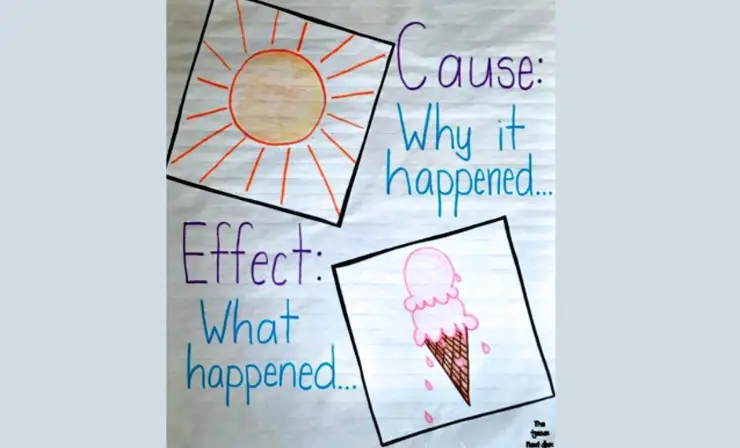
Difficulty Level: Easy
Cost: Low ($1 to $5) – No additional costs unless props or visual aids are purchased.
Materials
- Everyday objects or pictures to illustrate examples (optional)
I recommend watching the video “Cause and Effect for Kids,” where we explore the concept through engaging stories, helping students learn to identify causes and effects in everyday situations.
Steps
- Gather the children for a discussion circle.
- Present everyday scenarios, such as eating too much candy.
- Ask the children to predict the outcome of each scenario.
- Explain the actual effects and discuss why they happen.
What It Teaches
This activity helps preschoolers develop critical thinking and problem-solving skills by understanding cause and effect in familiar contexts. They learn to anticipate outcomes based on observable actions, which is essential for making smart choices. By applying abstract concepts to everyday situations, children enhance their reasoning abilities and begin to understand the impact of their actions.
3. Playing Cause and Effect with Nursery Rhymes
Nursery rhymes are excellent tools for illustrating cause and effect because of their simple, predictable patterns. Choose a nursery rhyme and discuss the sequence of events to highlight how actions lead to outcomes.
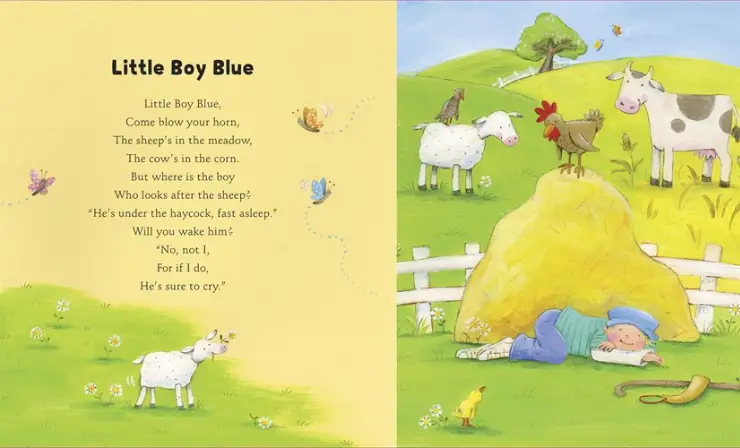
Difficulty Level: Easy
Cost: Low ($1 – $5) – Utilizes existing books or freely available nursery rhymes online.
Materials
- Nursery rhyme book or printed rhyme sheets
- Audio recordings of rhymes (optional)
Check out “Work It Out Wombats!” to see how cause and effect connect in fun and educational ways!
Steps
- Select a nursery rhyme.
- Read or play the rhyme to the children.
- Discuss what happens in the rhyme and why certain events occur.
- Encourage children to come up with their own examples of cause and effect from the rhyme.
What It Teaches
This activity helps children develop listening skills and comprehension. It also teaches them to identify cause and effect, fostering early literacy skills and logical reasoning. Through engaging with simple, rhythmic language, children practice memorization and learn to anticipate narrative structures, which are key skills in early reading development.
4. Cause and Effect Clue Words
Teach children to recognize and use specific “clue words” that signal cause and effect in sentences. This language-focused activity helps them improve their reading comprehension and writing skills by identifying and using these keywords.
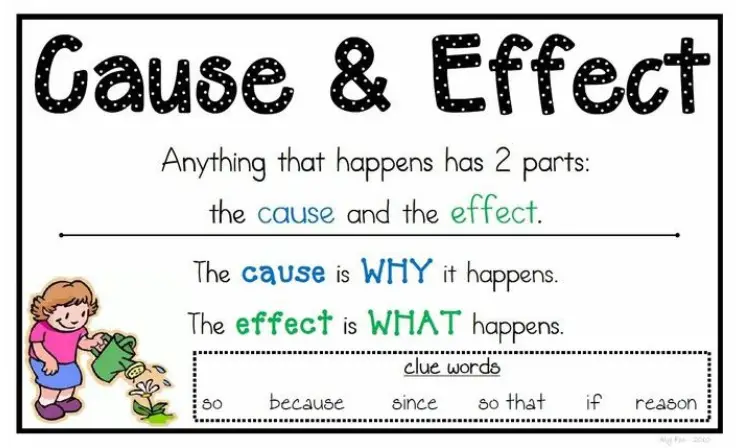
Difficulty Level: Easy
Cost: Low ($1 to $5) – Requires only basic writing materials.
Materials
- Paper
- Pencils or crayons
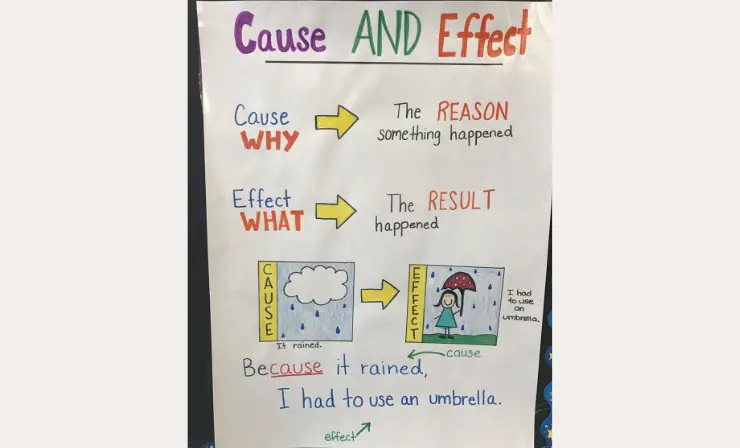
Steps
- Introduce cause and effect clue words: “because,” “since,” “therefore,” etc.
- Read sentences that use these words and discuss their meaning.
- Have children write or dictate sentences using a clue word to describe a personal experience.
What It Teaches
Children learn to recognize patterns in language that indicate cause and effect, enhancing their reading and writing skills. This activity also develops their ability to express complex ideas clearly and understand the logical flow of events, which is crucial for academic success and effective communication.
5. Design Cards
Creating cause-and-effect cards is a fun and artistic way for preschoolers to learn about the relationship between actions and outcomes. Children can decorate cards that illustrate a cause on one side and its effect on the other. These cards can then be displayed as part of a mini-exhibition, engaging children with visual and hands-on learning.
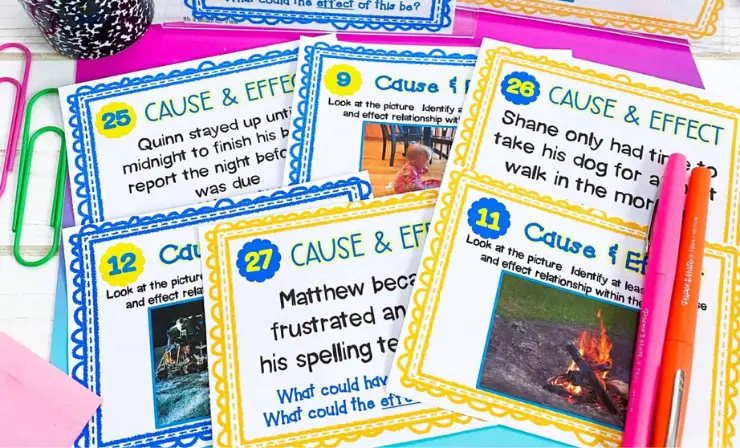
Difficulty Level: Easy
Cost: Low ($1 – $5) – Mostly requires paper and simple art supplies.
Materials
- Cardstock or heavy paper
- Crayons, markers, or paint
- Decorative items like stickers or pre-cut shapes (e.g., sun, moon)
- Glue
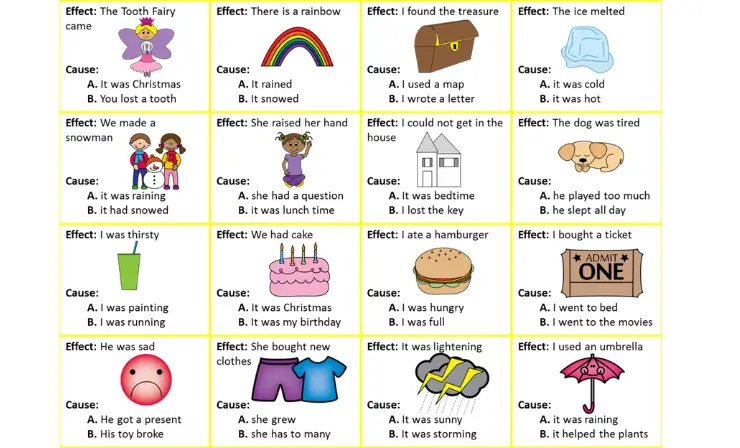
Steps
- Fold cardstock into a simple card shape.
- Invite children to draw or write a cause on the front and its effect on the inside.
- Decorate the cards with stickers or glued-on shapes to enhance the visual appeal.
- Arrange the completed cards in a display area for an interactive “cause-and-effect museum.”
What It Teaches
This activity encourages creativity while teaching children about cause and effect. By linking artistic expression with conceptual learning, children enhance their understanding of how actions result in consequences. They also develop fine motor skills and visual literacy through the hands-on approach.
6. Let Your Child Dive into Water
Water play is an excellent practical activity for teaching cause and effect. At a pool or beach, children can see how their movements create ripples and waves. This sensory experience is both educational and enjoyable, highlighting the physical effects of their actions in water.
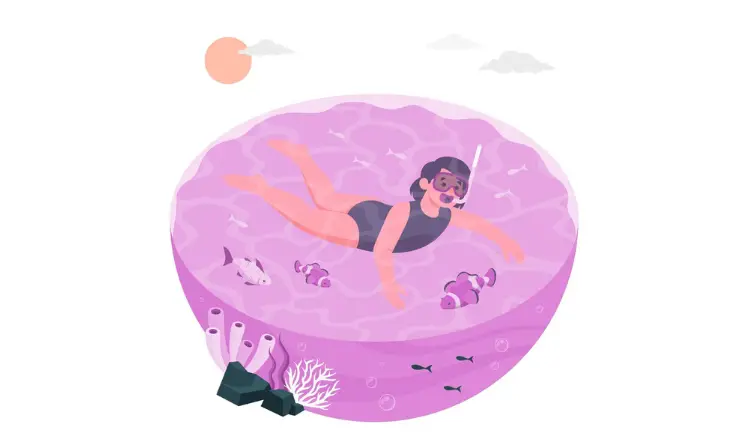
Difficulty Level: Easy
Cost: Low to Middle ($1 – $10) – Cost may include a pool entry fee.
Materials
- Swimming gear
- Pool or beach access
- Water toys
Check out this video to learn how to help your child feel comfortable in the water and ensure they can get in and out of the pool safely.
Steps
- Take children to a pool or beach.
- Let them explore how different movements affect the water.
- Discuss the varying effects, such as gentle vs. vigorous splashing.
- Observe and explain the consequences of actions in water, like how splashes can get water everywhere.
What It Teaches
Children learn about physical principles like motion and resistance. They also understand safety and the impact of their actions in different environments. This activity introduces basic scientific concepts in a practical way, making learning fun and memorable.
7. Plan Interesting Games
Incorporate games that teach cause and effect, like a quiz game show or a cause-and-effect version of Jeopardy. Games make learning about cause and effect fun and interactive, helping children apply what they’ve learned in a lively, engaging manner.
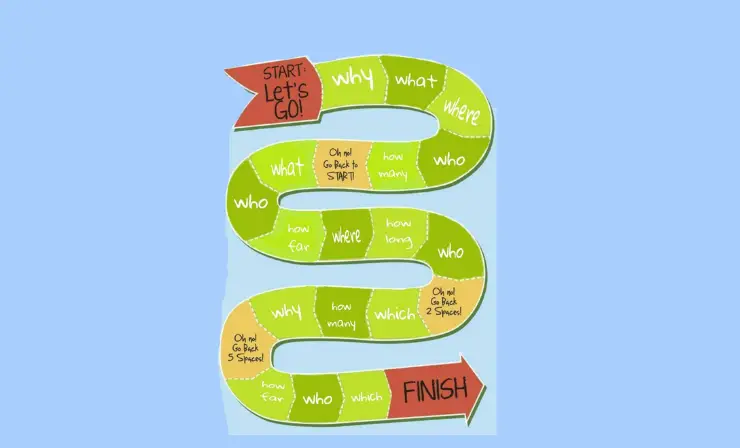
Difficulty Level: Easy to Medium
Cost: Low ($1 – $5) – Utilizes materials and resources commonly available in a classroom.
Materials
- Quiz questions and answers
- Jeopardy board (can be made from a large poster or digitally on a computer)
- Buzzer or bell for quiz games
Check out this video where kids can practice cause and effect through engaging spring-themed scenarios, perfect for learning and fun!
Steps
- Prepare the game materials, such as quiz cards or a Jeopardy board with categories and points.
- Explain the rules of the game to the children.
- Play the game, encouraging children to answer questions about cause and effect.
- Discuss the answers to reinforce learning and correct misunderstandings.
What It Teaches
These games help reinforce the understanding of cause and effect, improve memory, and encourage teamwork and communication among preschoolers. Children engage in playful competition while learning to connect actions with outcomes, which boosts their critical thinking and collaborative skills.
8. Creating an Anchor Chart
Use an anchor chart to represent cause and effect visually. This can be particularly useful in helping children grasp how certain actions lead to specific outcomes. By including keywords such as “because” and “since,” children learn to spot these clues in texts and discussions, aiding their comprehension skills.
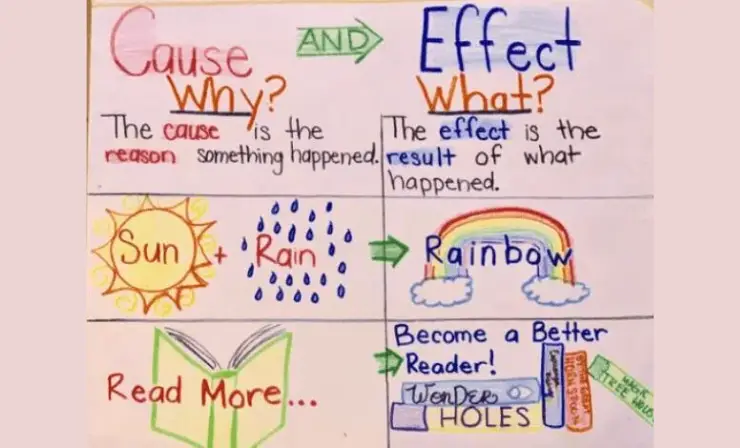
Difficulty Level: Medium
Cost: Low ($1 – $5) – Most materials are simple and can be found at home or in a classroom.
Materials
- Large poster board or paper
- Markers or crayons
- Stickers or pictures for visual aids (optional)
I recommend this tutorial for preschoolers on how to create anchor charts from start to finish, a great resource for enhancing early learning environments.
Steps
- Prepare a large poster board.
- Draw a simple diagram or series of events.
- Label each cause and effect with arrows and include transitional words.
- Discuss the chart with the children, pointing out how one event leads to another.
What It Teaches
Children learn to identify and understand cause-and-effect relationships through visual representation. This activity teaches them to read for meaning and improves their ability to follow logical sequences in both academic and everyday contexts. By engaging visually and contextually with the material, they develop a deeper understanding of how actions lead to consequences.
9. Discussions about Cause-and-Effect Relationships
Encourage children to think about complex sequences by discussing and drawing examples of cause and effect, like a Rube Goldberg machine. This encourages them to think about how different actions interact to produce a specific result.
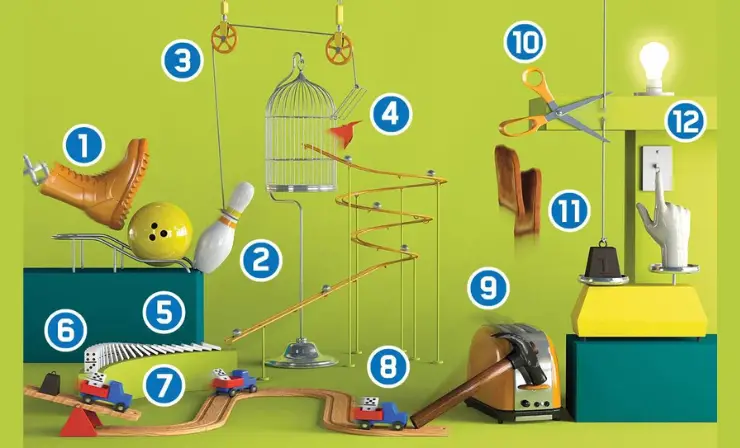
Difficulty Level: Medium
Cost: Low ($1 to $5) – Mainly uses paper and drawing materials.
Materials
- Paper
- Crayons or markers
- Examples of Rube Goldberg machines or similar sequences (printed or digital)
Click here to watch a video on setting up a Rube Goldberg machine, perfect for kids and budding inventors looking to explore the fun side of physics!
Steps
- Show an illustration or video of a Rube Goldberg machine.
- Discuss how each part causes a reaction in the next.
- Have the children draw their own simple cause-and-effect sequences.
- Discuss what happens if one part of the sequence changes.
What It Teaches
This activity enhances understanding of sequences and how they work together to create an outcome. It teaches children about the interconnectedness of actions and their consequences, fostering early engineering thinking and problem-solving skills. Children are encouraged to think critically about how changes in one part of a sequence can alter the entire outcome.
10. Role-Play for Learning Cause and Effect
Role-playing is a dynamic way to teach preschoolers about cause and effect. Prepare scenarios on slips of paper for children to act out, focusing on actions and their consequences. The children can use sound effects but should minimize spoken words, emphasizing the action and reaction. This helps children understand how their actions can lead to various outcomes.
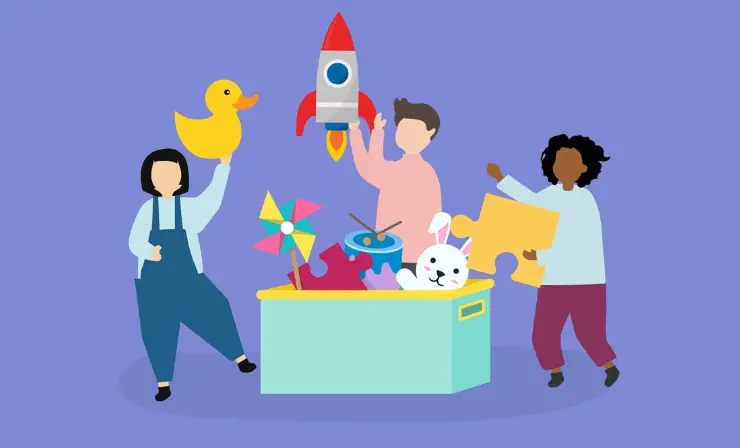
Difficulty Level: Medium
Cost: Low ($1 – $5) – Mainly involves basic materials like paper and markers for preparing scenario slips.
Materials
- Paper slips
- Markers or pens
- Props for scenarios (optional)
Watch this video to learn how to organize the “Role-Play for Learning Cause and Effect” activity, easily adaptable for preschoolers to enhance their understanding of cause and effect through interactive play.
Steps
- Write different scenarios on paper slips, each depicting a cause and effect (e.g., “You play baseball and a window breaks”).
- Divide children into small groups and distribute the scenarios.
- Allow 5-10 minutes for practice, where each group plans their role-play.
- Let each group perform their scenario in front of the class.
- After each performance, discuss with the class the cause and effect demonstrated.
What It Teaches
This activity helps children understand that every action has a consequence, enhancing their ability to predict outcomes and understand the impact of their actions in real-world settings. Role-playing different scenarios also develops empathy and emotional intelligence as they explore different perspectives.
11. Use a Graphic Organizer
After reading a story, use a graphic organizer to map out cause and effect relationships from the narrative. This helps children visualize the connections between different events and understand how changing one event can alter outcomes.
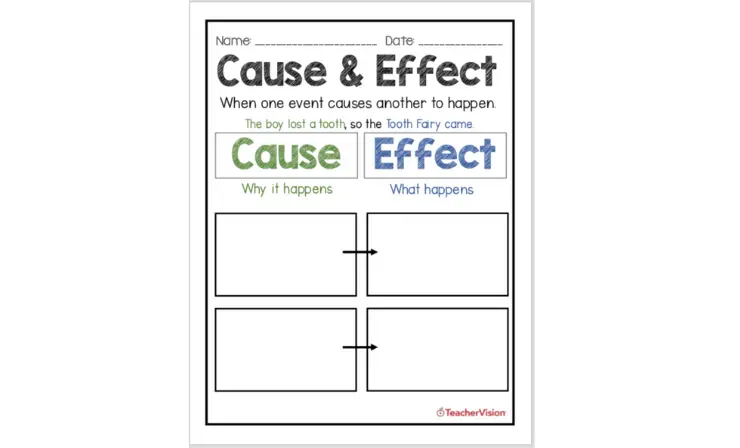
Difficulty Level: Medium
Cost: Low ($1 – $5) – Requires paper and writing tools.
Materials
- Paper or printable graphic organizers
- Pencils and crayons
Watch this video to learn how to organize the activity “Cause and Effect – Graphic Organizers,” a great tool for enhancing understanding in a structured and visual way.
Steps
- Read a story aloud to the children.
- Hand out graphic organizers and ask children to fill them out with the causes and effects of the story.
- Discuss each child’s findings and how changing certain causes might alter the effects.
What It Teaches
This activity enhances reading comprehension and critical thinking by allowing children to analyze stories deeply and understand the logical flow of events. It teaches them to organize information visually, which can help with memory retention and clarity of thought.
12. Create Flipbooks
Creating flipbooks is a hands-on way to explore cause and effect. Each page of the flipbook represents a different cause leading to a corresponding effect, which can be revealed by flipping the pages.
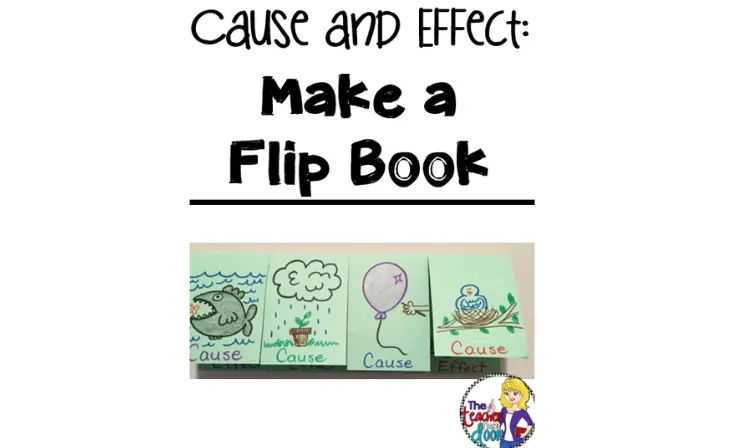
Difficulty Level: Medium
Cost: Low ($1 – $5) – Only basic art supplies are needed.
Materials
- Paper (size 9×12 inches)
- Scissors
- Ruler
- Markers or crayons
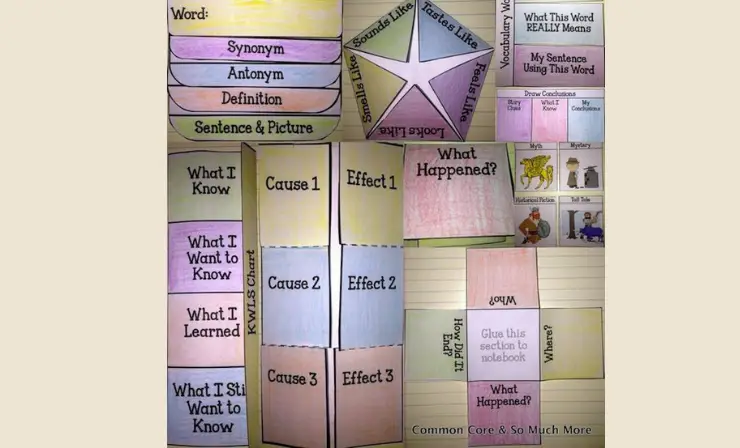
Steps
- Fold the paper “hot dog style.”
- Mark and cut the paper at intervals to create flaps.
- On each flap, write a cause and an effect underneath that can be revealed as the flap is lifted.
- Allow children to decorate and illustrate their flipbooks.
What It Teaches
Children learn about sequencing and the concept of one event leading to another. This activity also fosters creativity and fine motor skills as they cut, write, and draw, helping them understand the dynamic nature of cause and effect in a tangible, interactive format.
13. Create a Cause-and-Effect Chain
Creating a cause-and-effect chain helps children understand complex stories or events by linking multiple causes and effects. Use colorful papers to visually differentiate between causes and effects, making the connections clearer.
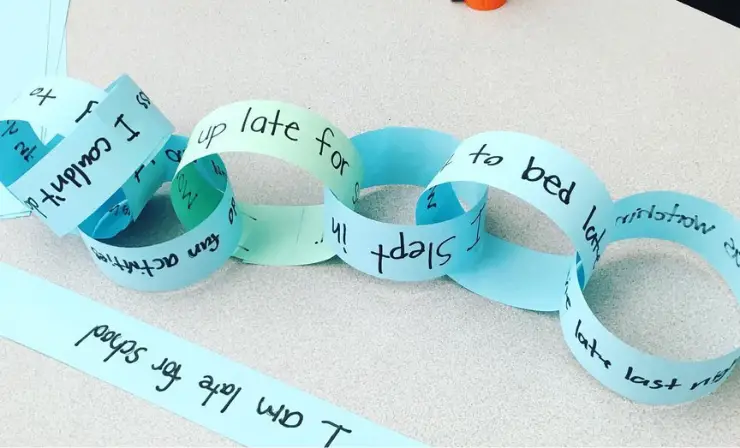
Difficulty Level: Medium
Cost: Low ($1 – $5)
Materials
- Different colored papers
- Markers or pens
- Tape or glue
Watch this video guide to learn how to make a paper chain, a fun and simple craft perfect for all ages!
Steps
- Cut strips of colored paper, assigning one color for causes and another for effects.
- Write a cause on one strip and an effect it leads to on another.
- Link the strips in a chain that illustrates the sequence of events.
- Display the chain to show how events are interconnected.
What It Teaches
This visually demonstrates the flow of events, enhancing children’s ability to understand complex sequences and outcomes. It teaches organizational skills and pattern recognition, which are essential for problem-solving and logical thinking.
14. Make Comics
Creating a comic strip allows children to depict a cause-and-effect relationship through drawing. Using characters like Pete the Cat, children can illustrate an event (cause) and its outcome (effect) in a fun, engaging format.
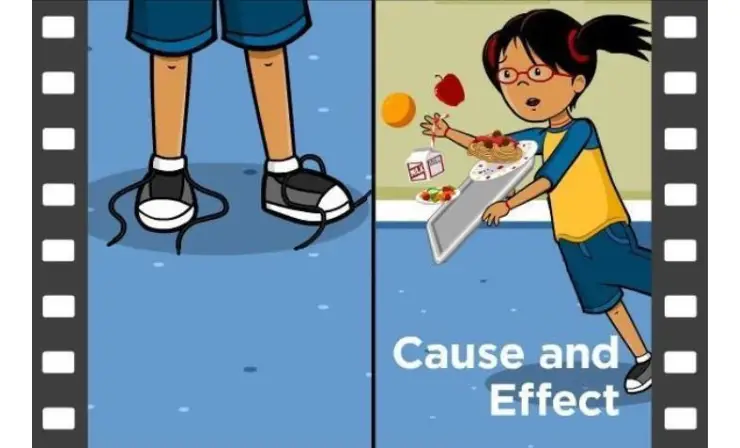
Difficulty Level: Medium
Cost: Low ($1 – $5)
Materials
- Construction paper
- Crayons, markers, or watercolors
- Reference images or books for character ideas (e.g., Pete the Cat)
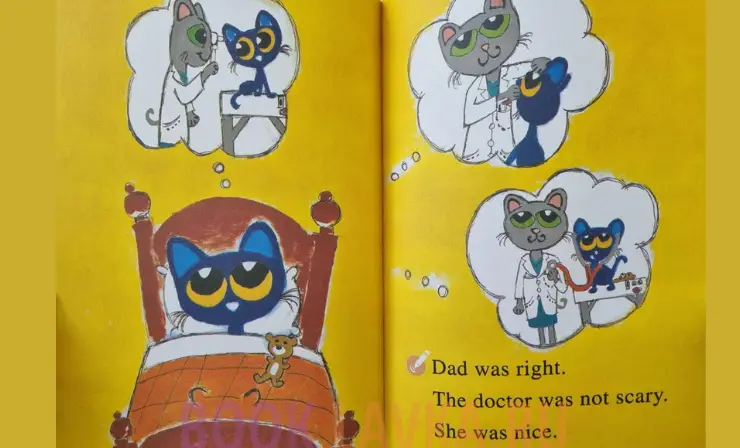
Steps
- Fold a piece of construction paper in half and then unfold to create two sections.
- Label one side “Cause” and the other “Effect.”
- Draw a scene with characters where one panel shows the cause and the next shows the effect.
- Share and discuss each comic, exploring different cause-and-effect scenarios depicted.
What It Teaches
Creating comics helps children understand the narrative structure and relationships between events, fostering artistic skills and storytelling abilities. It promotes literacy and creativity, encouraging children to express ideas through both text and visuals and enhancing their ability to communicate complex relationships.
15. Use Photos to Explore Cause and Effect
After mastering basic concepts, children use photos to identify and articulate multiple causes and effects within a single scenario. This visual activity encourages deeper analysis and reinforces their understanding of cause and effect.
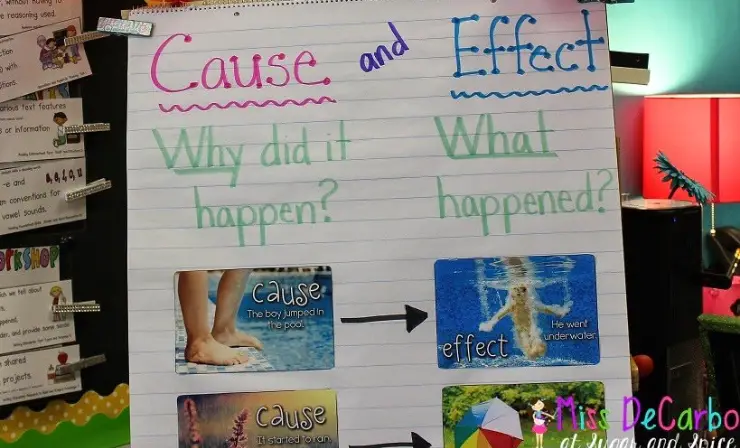
Difficulty Level: Medium
Cost: Low ($1 to $5) – Photos can be printed or viewed digitally.
Materials
- Photos with multiple elements (printed or digital)
- Construction paper or chart paper
- Glue (for attaching photos to paper)
- Markers or pencils
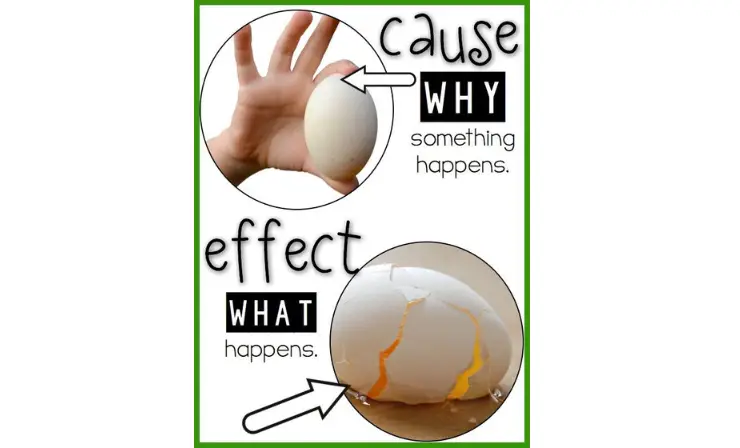
Steps
- Provide each child with a photo that depicts multiple activities.
- Glue the photo at the top of a piece of paper.
- Divide the paper below the photo into two sections labeled “Cause” and “Effect.”
- Have children brainstorm and write down different causes and effects visible in the photo.
What It Teaches
This activity builds on basic cause and effect understanding by challenging children to identify multiple relationships within a single scenario. It develops critical thinking and observational skills, teaching them to analyze complex situations and understand how different elements within a scenario interact.
16. Do a Scavenger Hunt
A cause-and-effect scavenger hunt is an active way to engage children in finding and understanding causes and subsequent effects around their environment or during specific learning themes.
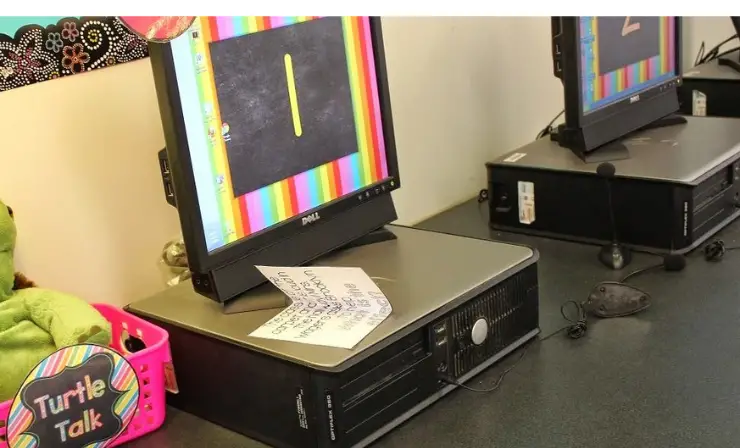
Difficulty Level: Medium
Cost: Low ($1 – $5)
Materials
- Clue cards
- Objects or pictures to find
- Prizes or stickers for completion
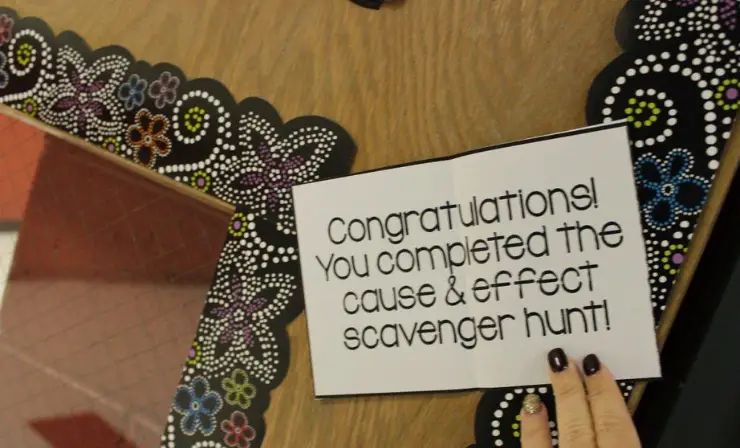
Steps
- Prepare clue cards that describe a cause and hint at its effect.
- Hide clues around the area.
- Divide children into teams and give them the first clue.
- As they find each clue, discuss how it led to the next.
- Reward teams who complete the hunt with a small prize.
What It Teaches
This scavenger hunt teaches children about cause and effect in a fun and interactive way, enhancing their problem-solving skills and understanding of sequential logic. As they follow clues and predict outcomes, they develop critical thinking and teamwork abilities. Additionally, this activity fosters communication and collaboration among peers, helping children articulate their thoughts and listen to others as they work together to solve the puzzle and understand the connections between events.
Why are Cause and Effect Activities Important for Preschoolers?
Understanding cause and effect is a fundamental concept that children begin to grasp from a very young age. This concept is intricately woven into the fabric of cognitive development through various forms of play, particularly with toys designed to illustrate this relationship.

Cause and effect toys, such as a simple jack-in-the-box or a bead maze on a Wooden Activity Cube, provide clear and immediate feedback based on a child’s actions. For instance, when a child turns a crank, a figure pops up, or when they push a bead, it moves across a maze. These toys not only entertain but also educate by showing that actions have direct consequences.
Incorporating cause and effect learning into playtime seamlessly integrates education into daily activities, making learning a natural and enjoyable part of a child’s day. From as early as three months old, children can begin to recognize that their actions, such as crying, elicit responses from their caregivers, further reinforcing this concept. This early learning extends to language development, where cause and effect can help children understand that their words and actions can influence others, enhancing their communication skills.
Overall, cause and effect activities are not only foundational for understanding the physical world but also for fostering an interactive learning environment that promotes active learning, curiosity, and intellectual development.
Tips for Teaching Cause and Effect
Understanding cause and effect is a crucial cognitive skill that children start to develop from a very young age. Teaching this concept helps young learners grasp how their actions influence the world around them.
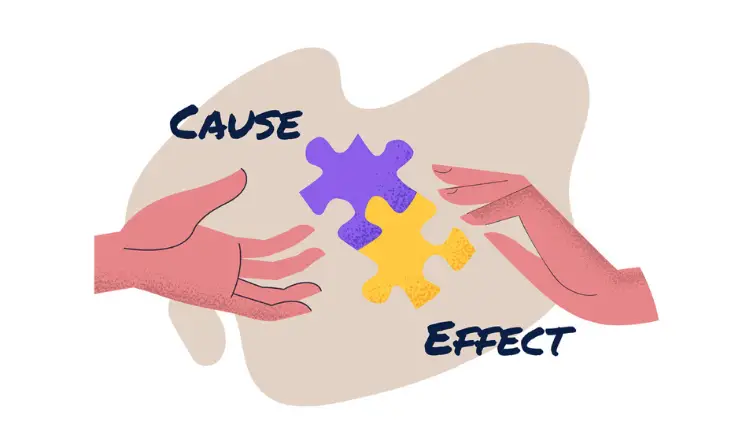
By introducing cause and effect early, using tangible examples, and reinforcing positive behavior, parents and educators can effectively guide children in learning this essential life skill. The following tips offer practical advice on how to weave these lessons seamlessly into everyday interactions and play.
- Start Young: Laying the Foundation Early. Teaching cause and effect from an early age is crucial as even toddlers can begin to grasp that their actions have consequences. When a toddler throws a toy and it breaks, it’s an opportunity to introduce them to the idea that every action has an outcome. Simple, clear explanations help lay the groundwork for understanding this fundamental concept. Start with basic scenarios that involve immediate and observable consequences to make it easier for them to make the connection.
- Use Real-Life Examples: Relating Lessons to Everyday Life. Implementing real-life examples greatly enhances a child’s understanding of cause and effect. When a child experiences direct consequences, like a rusty bike from leaving in the rain, it becomes a practical lesson in natural consequences. Explain these situations as they occur, using clear, relatable language to help your child see the direct link between their actions and the outcomes. This method makes abstract concepts more concrete and understandable for young minds.
- Encourage Responsibility: Teaching Accountability. Highlighting the importance of responsibility is integral in teaching cause and effect. If your child forgets their homework and faces consequences such as a lower grade, use this as a teachable moment to discuss the importance of responsibility and planning ahead. Encourage them to think about how their actions today can affect their tomorrow, fostering a sense of accountability and self-discipline that will serve them throughout life.
- Encourage Critical Thinking: Considering Future Consequences. Promoting critical thinking helps children understand cause and effect on a deeper level. Encourage them to consider what might happen as a result of certain actions before they make decisions. For instance, discuss the potential outcomes of skipping homework or not sharing with friends. This type of reasoning helps children learn to anticipate and weigh potential consequences, enhancing their decision-making skills and their ability to predict outcomes. I recommend reading the article “Critical Thinking Strategies for Elementary Students: 7 Exercises and 5 Activities to Help” to discover effective ways to enhance critical thinking skills in young learners.
- Model Good Behavior: Leading by Example. Modeling the behavior you want to see in your children is one of the most effective ways to teach them about cause and effect. If you consistently demonstrate accountability for your own actions, your child is more likely to emulate this behavior. Show them through your actions how decisions can lead to positive outcomes and how negative consequences can be a result of poor choices. This visual and practical demonstration is often more impactful than verbal advice alone.
- Use Positive Reinforcement: Encouraging Good Decisions. Using positive reinforcement is key to helping your child internalize the lessons of cause and effect. When they make a decision that leads to a positive outcome, make sure to acknowledge and praise this behavior. This not only reinforces their understanding of cause and effect but also builds their confidence in making decisions. Celebrating their successes shows them the benefits of thoughtful actions and encourages a pattern of positive decision-making.
Teaching cause and effect is not just about helping children understand their immediate world—it also prepares them for future challenges by fostering analytical thinking, responsibility, and proactive behavior. These skills are foundational for academic success and personal development. By applying these tips, you can help your child build a robust understanding of cause and effect, equipping them with the tools they need to navigate the complexities of life effectively.
I recommend reading the article “19 Engaging Electricity Science Experiments for Kids: Igniting Curiosity, Innovation, and a Love for STEM” for more exciting activities that foster a love of learning in children.
Useful Resources
- What Is Cause And Effect And How Do We Teach It?
- Cause and Effect Games
- 12 Cause and Effect Children’s Books
Final Thoughts
Through these 16 engaging cause and effect activities, preschoolers can learn to observe and understand the relationship between actions and their outcomes in a fun and meaningful way. Incorporating these exercises into daily learning routines will not only enhance children’s cognitive development but also foster critical thinking and creativity, setting them on a path of lifelong learning and curiosity.
Discover more insights by exploring our informative article on STEM activities, titled “19 Best STEM Activities for Elementary Students: Engaging and Educational Projects.“
- Overview of 22 Low-Code Agencies for MVP, Web, or Mobile App Development - October 23, 2024
- Tips to Inspire Your Young Child to Pursue a Career in Nursing - July 24, 2024
- How Parents Can Advocate for Their Children’s Journey into Forensic Nursing - July 24, 2024
